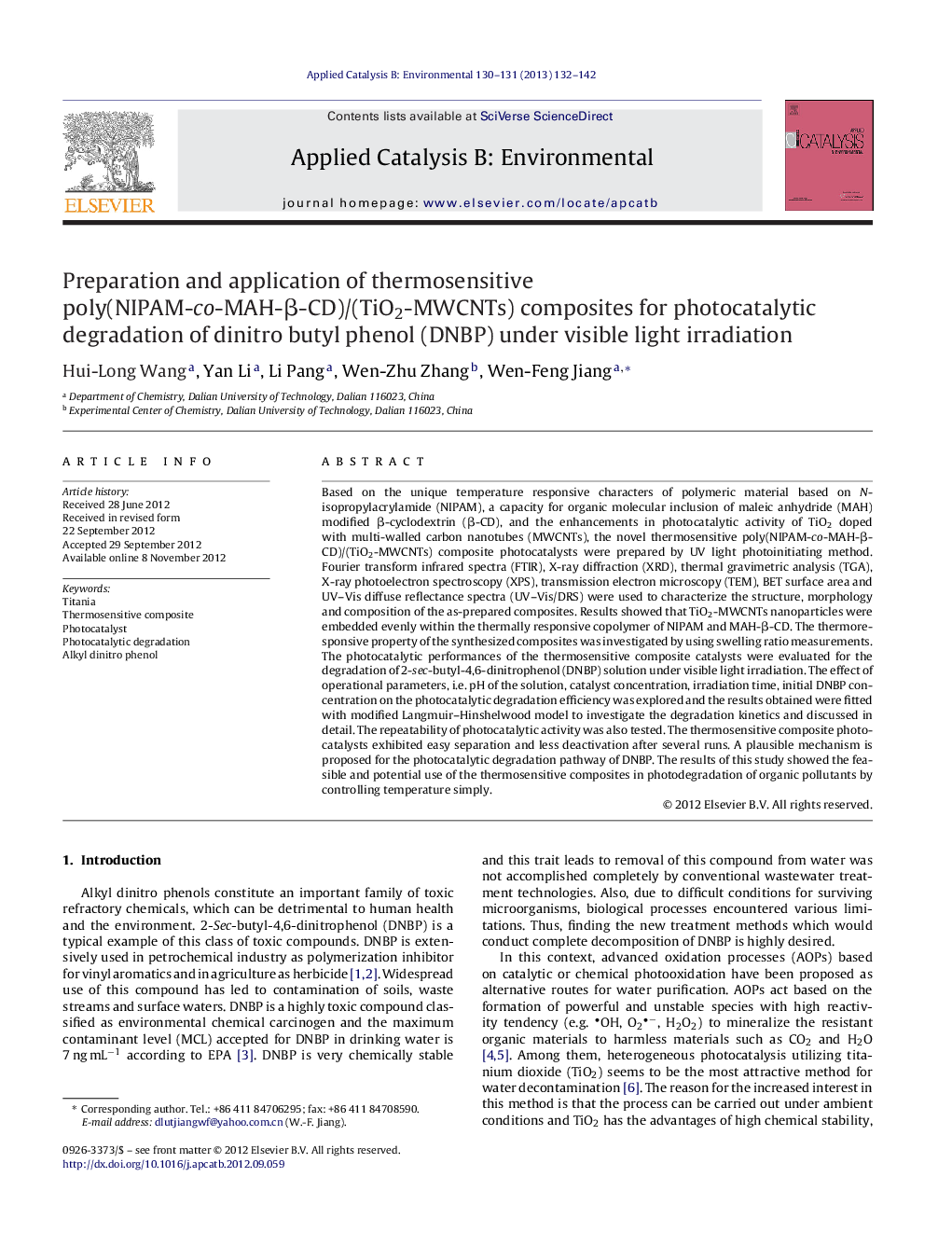| کد مقاله | کد نشریه | سال انتشار | مقاله انگلیسی | نسخه تمام متن |
|---|---|---|---|---|
| 45824 | 46423 | 2013 | 11 صفحه PDF | دانلود رایگان |

Based on the unique temperature responsive characters of polymeric material based on N-isopropylacrylamide (NIPAM), a capacity for organic molecular inclusion of maleic anhydride (MAH) modified β-cyclodextrin (β-CD), and the enhancements in photocatalytic activity of TiO2 doped with multi-walled carbon nanotubes (MWCNTs), the novel thermosensitive poly(NIPAM-co-MAH-β-CD)/(TiO2-MWCNTs) composite photocatalysts were prepared by UV light photoinitiating method. Fourier transform infrared spectra (FTIR), X-ray diffraction (XRD), thermal gravimetric analysis (TGA), X-ray photoelectron spectroscopy (XPS), transmission electron microscopy (TEM), BET surface area and UV–Vis diffuse reflectance spectra (UV–Vis/DRS) were used to characterize the structure, morphology and composition of the as-prepared composites. Results showed that TiO2-MWCNTs nanoparticles were embedded evenly within the thermally responsive copolymer of NIPAM and MAH-β-CD. The thermoresponsive property of the synthesized composites was investigated by using swelling ratio measurements. The photocatalytic performances of the thermosensitive composite catalysts were evaluated for the degradation of 2-sec-butyl-4,6-dinitrophenol (DNBP) solution under visible light irradiation. The effect of operational parameters, i.e. pH of the solution, catalyst concentration, irradiation time, initial DNBP concentration on the photocatalytic degradation efficiency was explored and the results obtained were fitted with modified Langmuir–Hinshelwood model to investigate the degradation kinetics and discussed in detail. The repeatability of photocatalytic activity was also tested. The thermosensitive composite photocatalysts exhibited easy separation and less deactivation after several runs. A plausible mechanism is proposed for the photocatalytic degradation pathway of DNBP. The results of this study showed the feasible and potential use of the thermosensitive composites in photodegradation of organic pollutants by controlling temperature simply.
Figure optionsDownload as PowerPoint slideHighlights
► Simple UV light photoinitiating synthesis method for the composite photocatalysts.
► The photocatalysts had thermoreversibility with little loss of thermosensitivity.
► Exceptionally high activity in the photocatalytic degradation of DNBP.
► High adsorption capacity, visible light & thermo-response of the photocatalysts.
Journal: Applied Catalysis B: Environmental - Volumes 130–131, 7 February 2013, Pages 132–142